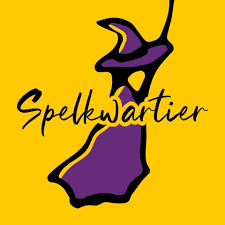‘We have used FSC-certified materials for all cardboard, paper and wood components and our card holders are made of Green PE to ensure environmentally friendly production.’
When you publish a game that is all about brown and green energy and encourages the use of regenerable energy, there is no way around it and all the components in the box should be produced as sustainably as possible.
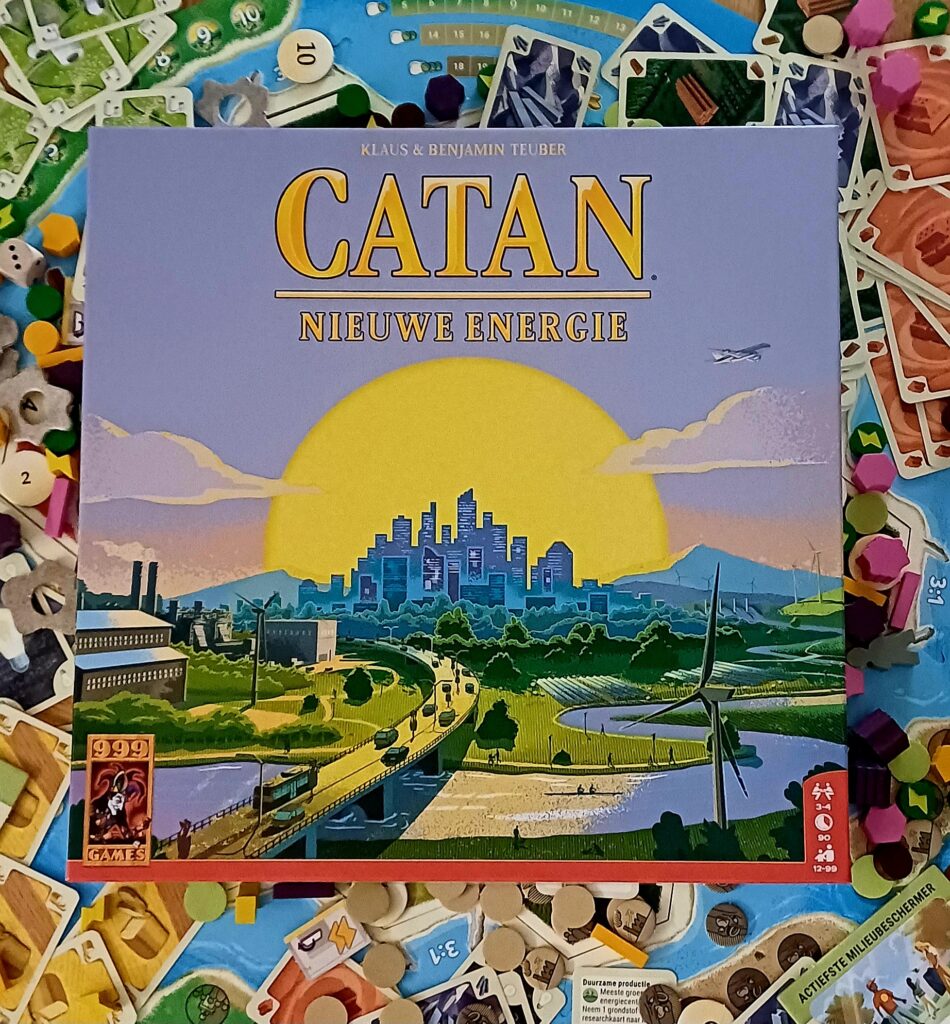
Catan – New Energies is the classic Catan game but with a modern twist, both in theme and in extra game dimension/tactics (via the personal board). The game is constructed by clicking the border pieces together and placing the land tiles and number tiles in the indicated places. The pollution tile must be placed on the correct space in the global pollution track and the environmental inspector (formerly: the robber) makes his way through the desert. Next to the playing field just created are the victory point tiles, environmental damage tiles, energy tiles, dice and the three overview cards. After you have put the research cards, resource cards and development cards (covered) in the card holders, put the 43 brown event tiles in the pouch and each player has already placed one village, one research city and two streets on the playing field, the preparation is done! Only the playing field then, because the personal board also need to be prepared.
This is actually just as easy: follow the steps. Brown and green power plants (with green event tokens underneath) in the designated spots, as well as the remaining villages, research city and streets. And last (or first) is the warehouse. Since villages and cities are already missing from the personal board, pluses are visible. These cause the pollution tile to move one place on the global pollution track. So in a three-player game, you start at spot nine and in a four-player game at spot twelve.
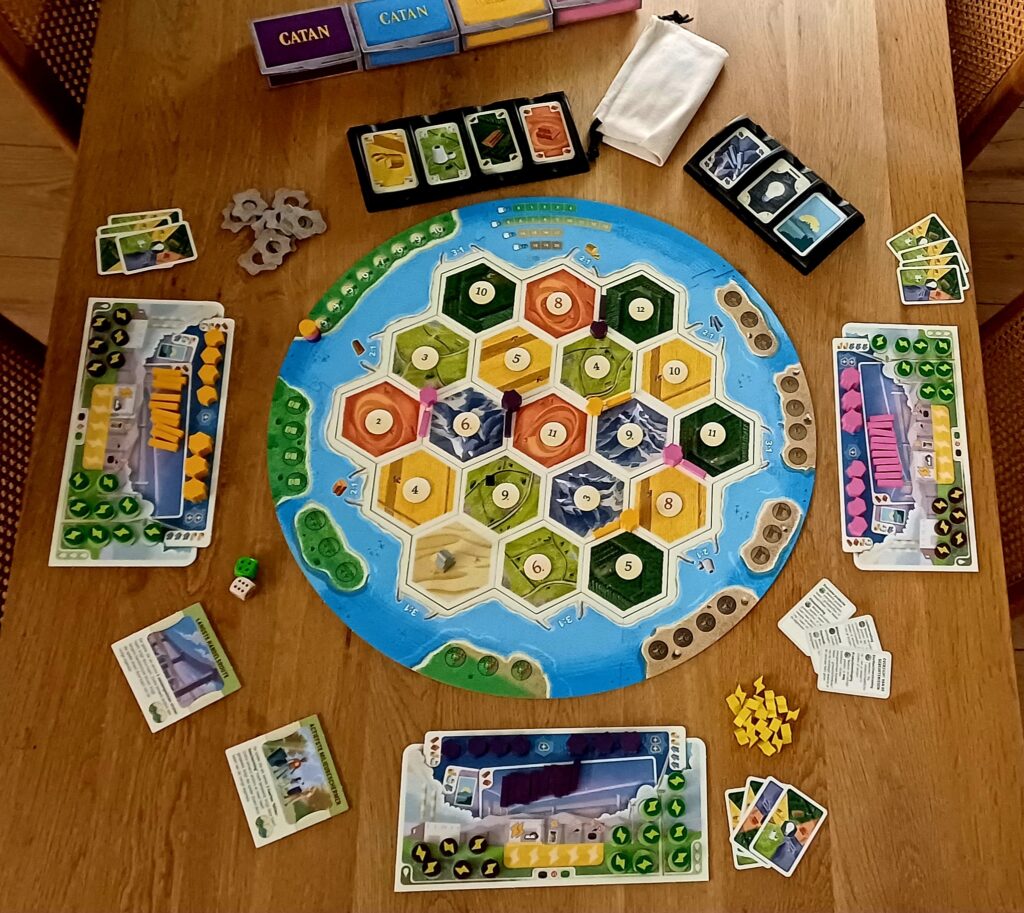
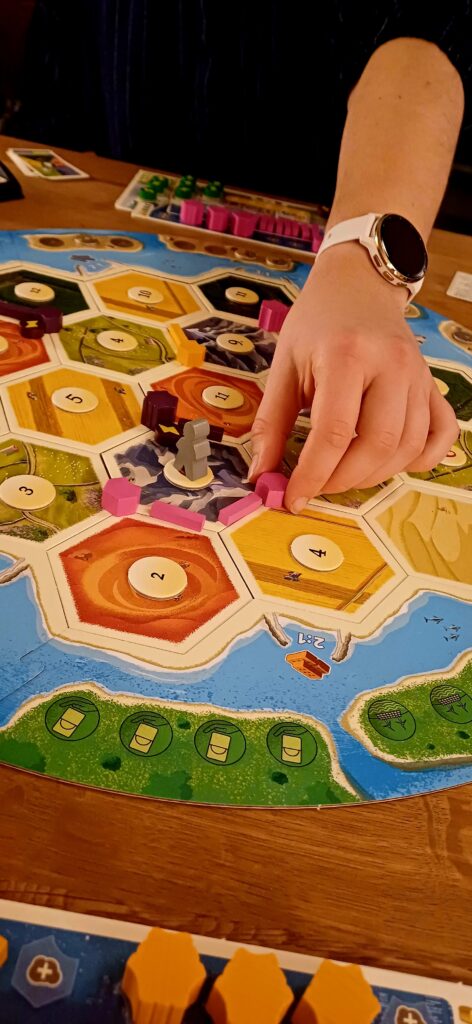
On each player’s turn, three phases must be completed.
- Draw event token(s) from the pouch
On the pollution track, the pollution tile shows how many event tiles the player has to draw. An event token must then be placed on the right spot at the edge of the playing field. If the token completes the row, the event must be carried out. Various ‘brown’ events are conceivable, such as environmental disaster and air pollution (both of which lead to environmental damage which blocks certain parts), but also ‘green’ events, such as sustainable production and government funding.
2. Receiving revenue or moving environmental inspector
The two dice must be rolled, after which the proceeds belonging to the sum of the dice are distributed. If seven is rolled, the environmental inspector must be moved. The environmental inspector checks whether your cities and villages meet the environmental requirements. This means: if you have more than seven cards in your hand, you have to put half (rounded down, that’s nice) back into the supply. Also, the yields on which he stands can’t be earned.
3. Trade, build, buy
Trading can be done – as in any Catan game – with the other players, but also with ports or the general supply. After building villages, cities, brown and green power plants, the pollution tile must be moved. Building green power plants causes minuses, which lead to the pollution tile moving back. Building power plants is done through research cards and yields energy tokens that go on the personal board and can be exchanged for resource cards or tearing down a brown power plant, among other things. Finally, the following can be bought: (i) storage space for more allowed hand cards when the environmental inspector passes by, (ii) resource cards or research cards and (iii) development cards that give various advantages.
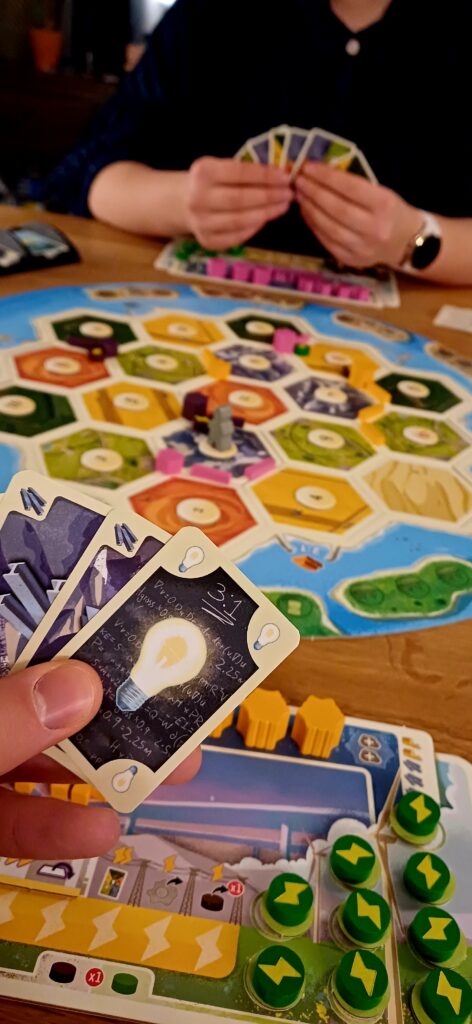
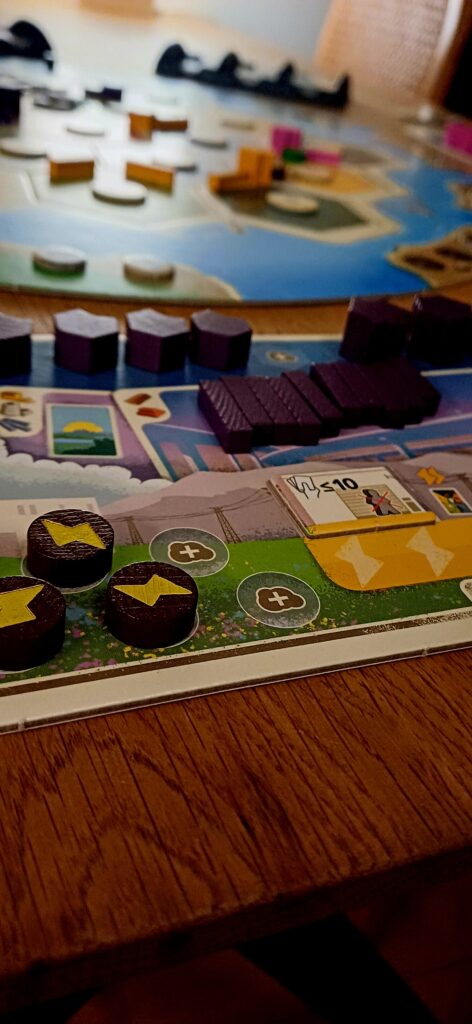
The game ends when someone has collected ten victory points or the pouch is empty.
This was Catan – New Energies in a nutshell. As a non-regular Catan player or enthusiast (I’m treading on thin ice), I still have to say that I really liked this edition. The personal board with the brown and green power plants and energy tiles is a nice addition to the traditional Catan game. But I think the coolest thing is really the theme. Very well thought out and moved with the times, paying attention to the smallest details. For example, a green power plant costs three research cards and a brown, polluting power plant costs one research card. In other words, regenerable energy is more expensive to produce because it involves the necessary innovations and research costs. The thematic background (information) is also a must read. Catan is not necessarily my favorite game, but I found this edition worth playing!



